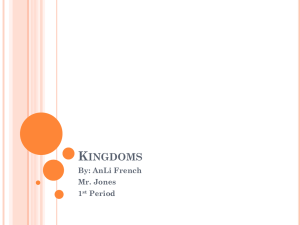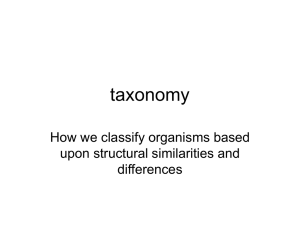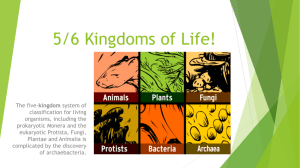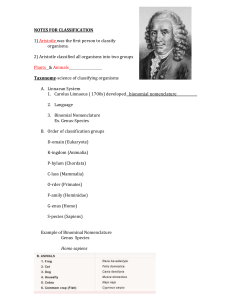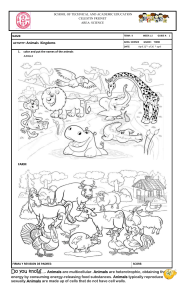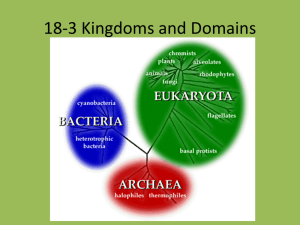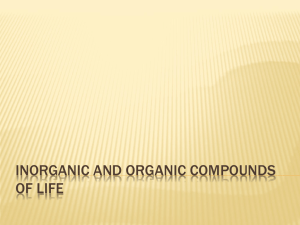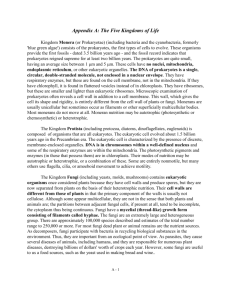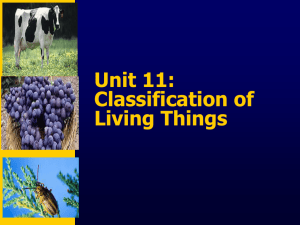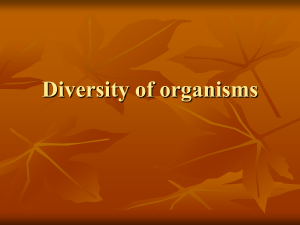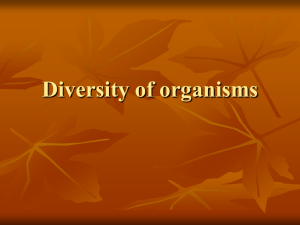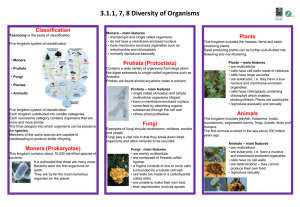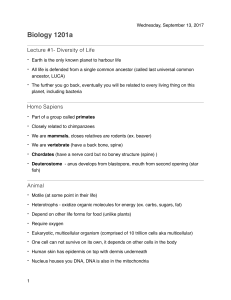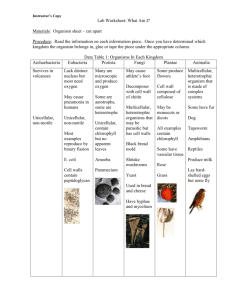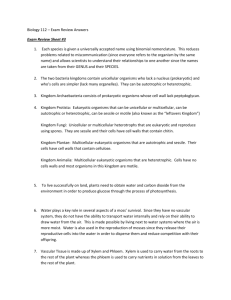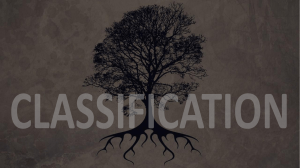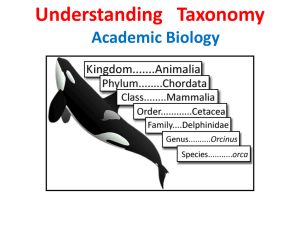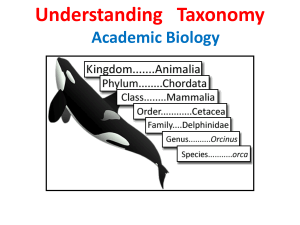The Kingdoms of Life
advertisement
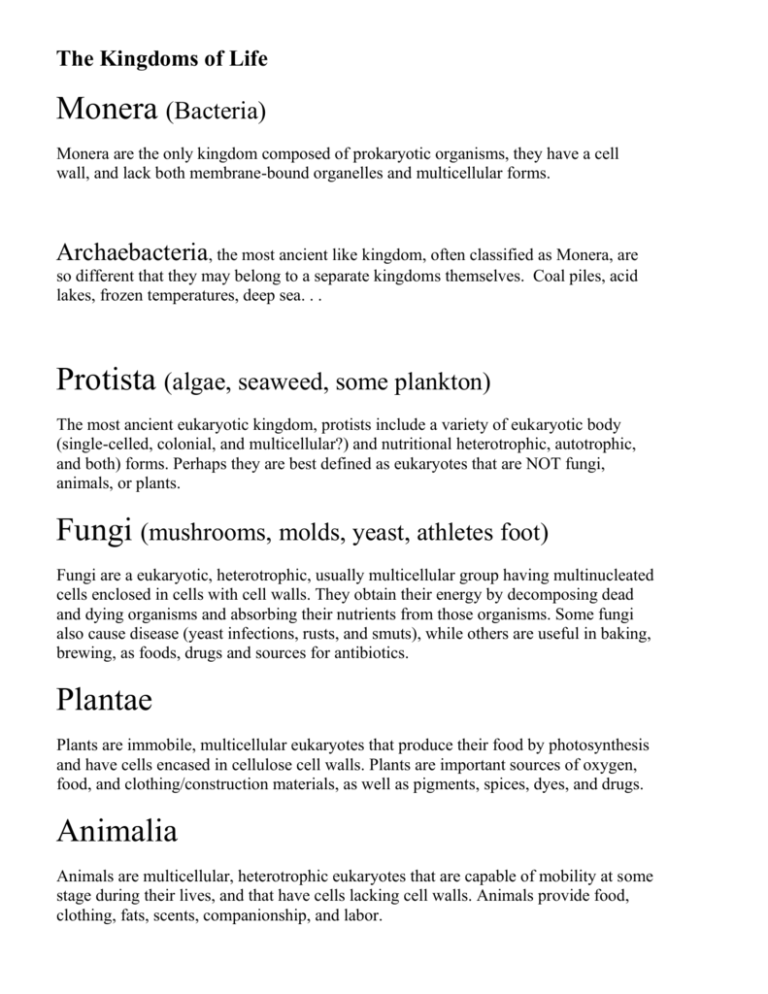
The Kingdoms of Life Monera (Bacteria) Monera are the only kingdom composed of prokaryotic organisms, they have a cell wall, and lack both membrane-bound organelles and multicellular forms. Archaebacteria, the most ancient like kingdom, often classified as Monera, are so different that they may belong to a separate kingdoms themselves. Coal piles, acid lakes, frozen temperatures, deep sea. . . Protista (algae, seaweed, some plankton) The most ancient eukaryotic kingdom, protists include a variety of eukaryotic body (single-celled, colonial, and multicellular?) and nutritional heterotrophic, autotrophic, and both) forms. Perhaps they are best defined as eukaryotes that are NOT fungi, animals, or plants. Fungi (mushrooms, molds, yeast, athletes foot) Fungi are a eukaryotic, heterotrophic, usually multicellular group having multinucleated cells enclosed in cells with cell walls. They obtain their energy by decomposing dead and dying organisms and absorbing their nutrients from those organisms. Some fungi also cause disease (yeast infections, rusts, and smuts), while others are useful in baking, brewing, as foods, drugs and sources for antibiotics. Plantae Plants are immobile, multicellular eukaryotes that produce their food by photosynthesis and have cells encased in cellulose cell walls. Plants are important sources of oxygen, food, and clothing/construction materials, as well as pigments, spices, dyes, and drugs. Animalia Animals are multicellular, heterotrophic eukaryotes that are capable of mobility at some stage during their lives, and that have cells lacking cell walls. Animals provide food, clothing, fats, scents, companionship, and labor.
